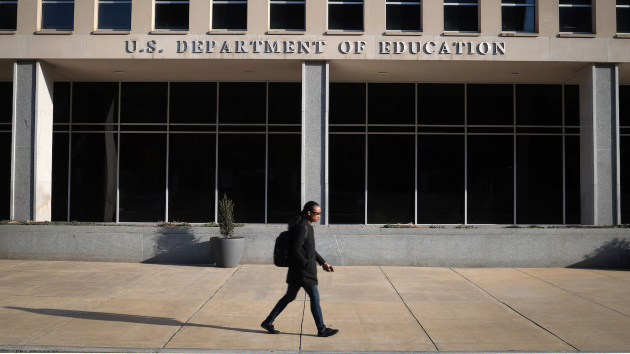Migrant crisis explained: What’s behind the border surge
Written by ABC Audio ALL RIGHTS RESERVED on September 22, 2023

(WASHINGTON) — The Biden administration is doubling down on strategies to contain migration as unauthorized border crossings surge across the southwest.
The number of migrants apprehended in a single day by the U.S. Border Patrol approached an estimated 9,000 on Wednesday, according to officials who declined to be identified to discuss preliminary data. Rural areas of southern Arizona, including the greater Tucson region, as well as south Texas have seen large increases in migration.
Border Patrol agents in Eagle Pass, Texas, on Wednesday “swiftly vetted and processed” about 2,500 migrants taken into custody at the border, according to U.S. Customs and Border Protection. The enforcement involved shutting down rail and vehicle traffic at multiple border crossings in the area.
The U.S. Border Patrol made 181,059 apprehensions along the southern border in August — up from 132,648 in July, according to the latest Customs and Border Protection data. Across the southwest, migrants were arrested or detained more than 232,000 times, the most since last December.
Authorities encountered migrants more than 300,000 times nationwide last month, up from 245,213 in July, according to the data.
The new data marks the largest monthly total ever recorded during the Biden administration.
This surge of migrants comes amid the Biden administration’s new measures to help curb the increase at the southern border. Many Republicans think the administration is not doing enough to help secure the U.S. borders; immigration advocates say the president is not doing enough to overhaul immigration laws.
ABC News is breaking down all the details on the border crisis and the latest developments — highlighting this new surge, and why it’s happening now.
Expanding deportations
The administration announced this week it would further expand deportations to include more families — a signal that children cannot be used to side-step the immigration process. It also dedicated a surge of 800 active duty Department of Defense personnel to support CBP.
At the same time, the administration is expanding work permit access and deportation protections for Venezuelans. The Temporary Protected Status expansion announce by Homeland Security on Wednesday will be available to 472,000 Venezuelans. These moves come along with parole processes for Cubans, Haitians, Venezuelans and Nicaraguans announced earlier this year. The combined effort is intended to create an orderly decision-making process, ensure more eligible immigrants can work while bluntly denying those with invalid claims to remain in the U.S.
Under the expanded expedited deportation protocols, authorities are expected to remove more families through Immigration and Customs Enforcement’s, Family Expedited Removal Management (FERM) program.
The program has drawn criticism from immigrant advocates who say it cuts access families should have to attorneys and legal resources they need to make asylum claims. The FERM program operates across the country, including destination cities where migrants end up, and is not limited to border towns.
A CBP spokesperson underscored the consequences for those who enter illegally, and without valid legal claims, including prosecution and a several-year ban on entering the U.S.
“We remain vigilant and expect to see fluctuations, knowing that smugglers continue to use misinformation to prey on vulnerable individuals,” the spokesperson said. “CBP is executing our operational plans and working to decompress areas along the southwest border.”
Anyone released into the country by CBP must remain engaged in immigration proceedings with requirements to report back to authorities, according to the agency.
Republicans have accused Biden of supporting policies that are too welcoming toward migrants, which have given way to historic crossing at the southern border.
President Biden touted his immigration reform efforts Wednesday at the Congressional Hispanic Caucus dinner. At the event, Biden noted his request of $4 billion in additional funding for border security this year — a figure Republicans have balked.
“I requested more funding, but instead of stepping up with solutions, Republicans are threatening to shut down the government,” Biden said. “Just think about this, man. Think how many people it’s going to hurt. Think to the people that are going to get hurt. It’s time to act.”
How did we get here?
Department of Homeland Security Secretary Alejandro Mayorkas will be in McAllen, Texas, this weekend for a visit with the president of Honduras. The two leaders are expected to discuss collaborative efforts to reduce unauthorized or “irregular migration,” DHS said in a statement.
Communication between federal agents and local authorities remains constant, one CBP official said. But as migrant apprehensions increased this week, CBP was forced to release some migrants before local aid groups were ready to assist.
CBP works with non-profit groups and state partners to identify locations where migrants can get released and access transportation. One shuttle stop in Nogales, for example, has options for people to travel to Phoenix or elsewhere.
“It’s a challenge, but I wouldn’t say it’s out of control,” one official said in reference to the migration management protocols CBP has in place.
The Biden administration has returned more than 233,000 people from 152 countries back to their country of origin since May, including more than 36,000 family members, one official said this week. Others however, get funneled into a backlogged system where immigration court cases can take months or years to adjudicate.
CBP has released migrants in coordination with local authorities as they work to vet and process those seeking to enter the U.S., the agency said in a statement Thursday. CBP is also working to stand up a new soft-sided facility in the Tucson area and maintains contracts for transportation and medical support.
A migratory surge of this magnitude has not been seen at the border since last spring — just before the Biden administration implemented the new border management policies.
At the time, officials had anticipated more migration as fast-track border expulsion protocols brought down during the pandemic under Title 42 of the U.S. code came to an end. To address the spring influx, the administration implemented a dual-track approach of enforcement and humanitarianism. Authorities expanded deportation processing, paroling more migrants through legal avenues and struck agreements with Mexico to accept the return of non-Mexican citizens.
The increases in unauthorized migration this week comes as the Biden administration pushes its strategy of bolstering legal options for immigration while cracking down on border enforcement. Officials say the administration remains bound by old legislative frameworks and budget restrictions that limit its ability to process migrants and provide work permits for asylum seekers. Those applying for asylum must wait 180 days before becoming eligible for a work permit.
Human smuggling’s impact on migration
Officials emphasize that much of the migration is driven by transnational criminal organizations engaged in the big business of human smuggling.
The operations amount to “hard-core recruiting, transporting” and financial exploitation of people across the western hemisphere, one official said.
ABC News’ Ben Gittleson and Luke Barr contributed to this report
Copyright © 2023, ABC Audio. All rights reserved.
 KVSP
KVSP 




